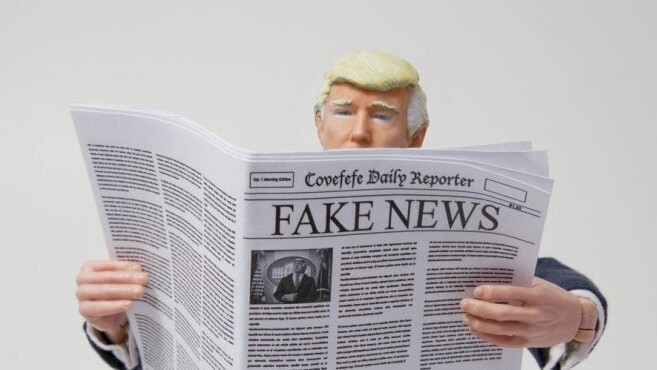
The Blockchain To Fight The Fake News?
Blockchain technology seems to appeal to media and businesses to combat fake news. The New York Times is working on the subject, when a French start-up has already developed a solution for companies.
At BlackRock last January, they must have had cold sweats. The press and financial markets were waiting for the annual letter from Laurence Fink, the CEO of the world's largest asset manager. The letter came as a press release, announcing an unprecedented shift from BlackRock that would reduce its investments in fossil fuels. Except the letter was a fake, a "fake news", a "hoax", in short a lie. Probably the work of activists wanting to point the finger at the mass of money generated by sectors that are not environmentally friendly. In any case, the Financial Times and CNBC got screwed. Black Rock must have quickly denied it.
Fake News is now slipping everywhere: from politicians' statements to yellow vests, the media are developing more and more fact-checking processes. And this issue is now hitting businesses hard. "There are two main threats to corporate," says Jérôme Lascombe of Wiztrust. Activists who want to expose bad behavior of a company, and hackers who want to manipulate the price of a stock in order to speculate on its value and make money."
Protecting shareholders and executives
Following Black Rock's outcry earlier this year, Jérôme Lascombe and his team at Wiztopic, which sells CMS solutions, a tool to certify documents, called Wiztrust, using blockchain technology, a transparent, secure information storage and transmission technology that operates without a central point of control. Wiztrust thus enables corporate and financial communications teams to "avoid fake financial news, avoid stock market manipulation and protect the interests of their shareholders while preserving the reputation of their executives", as Jérôme Lascombe explains.
In practical terms, Wiztrust's interface is similar to WeTransfer's: you load the document you received into the Wiztrust database, which will tell you if it is authentic. Blockchain technology makes it possible to assign a kind of digital "fingerprint" to a document.
Wiztrust is already working with much of the CAC 40. On the Bouygues’ institutional website, on the section reserved for press releases, you can see the words "certified with Wiztrust". Other clients include BPCE, Colas, Klépierre, Macif, Natixis and TF1.
One solution among others
"Klépierre is very sensitive to information security," says Julien Goubault, the group's director of communications. Blockchain technology and Wiztrust are a simple and innovative response to users' expectations of document certification."
Mr. Lascombe insists that Blockchain will not solve all the problems related to fake news. "It should be seen as a complement, not as a substitute for other existing or potentially existing solutions." Not least because if this technology can certify the authenticity of a document, it cannot verify the veracity of its information... But he is not alone in believing it. In its fake news law passed in November 2018, the French government had slipped in an amendment highlighting the possible use by the State of this technology for the fight against false information:
"The Government shall submit to Parliament, within six months of the promulgation of this Act, a report on the possibility of using blockchain technology to ensure the certification of various information, photographs, illustrations in all media disseminating information: social networks, the internet, platforms. This report specifies the essential conditions for the implementation of this chain of certification blocks, while respecting the preservation of freedom of expression." More than nine months after the enactment of this law, Forbes France found no trace of this report.
The New York Times, meanwhile, has launched its own R&D initiative called "The News Provenance project" which will explore the possible uses of blockchain in its fight against fake news: "Our initial work explores a blockchain-based system to record and share media metadata, especially images and videos, published by news agencies. We are also conducting user experience research to identify the types of signals that can help users recognize authentic media." Le Monde tried it with its "Decodex", with a mixed result: if the tool proves useful to distinguish between a site specializing in disinformation and "real" media, its first color code had raised some doubts. Even to fight fake news, you have to walk on eggshells.
Source: Wiztopic translation Forbes Article publish on 10/21/2019
Expert
Raphael Labbé
Co-fondateur & CEO of Wiztrust
Founder of WIZTRUST Protect, the blockchain certification platform for corporate and financial news. Founder of WIZTRUST PR, the enterprise software company de
| type | Title | Keywords | Date |
|---|---|---|---|
| Exemple-utilization-Wiztrust.png | Feb 8, 2021 |


